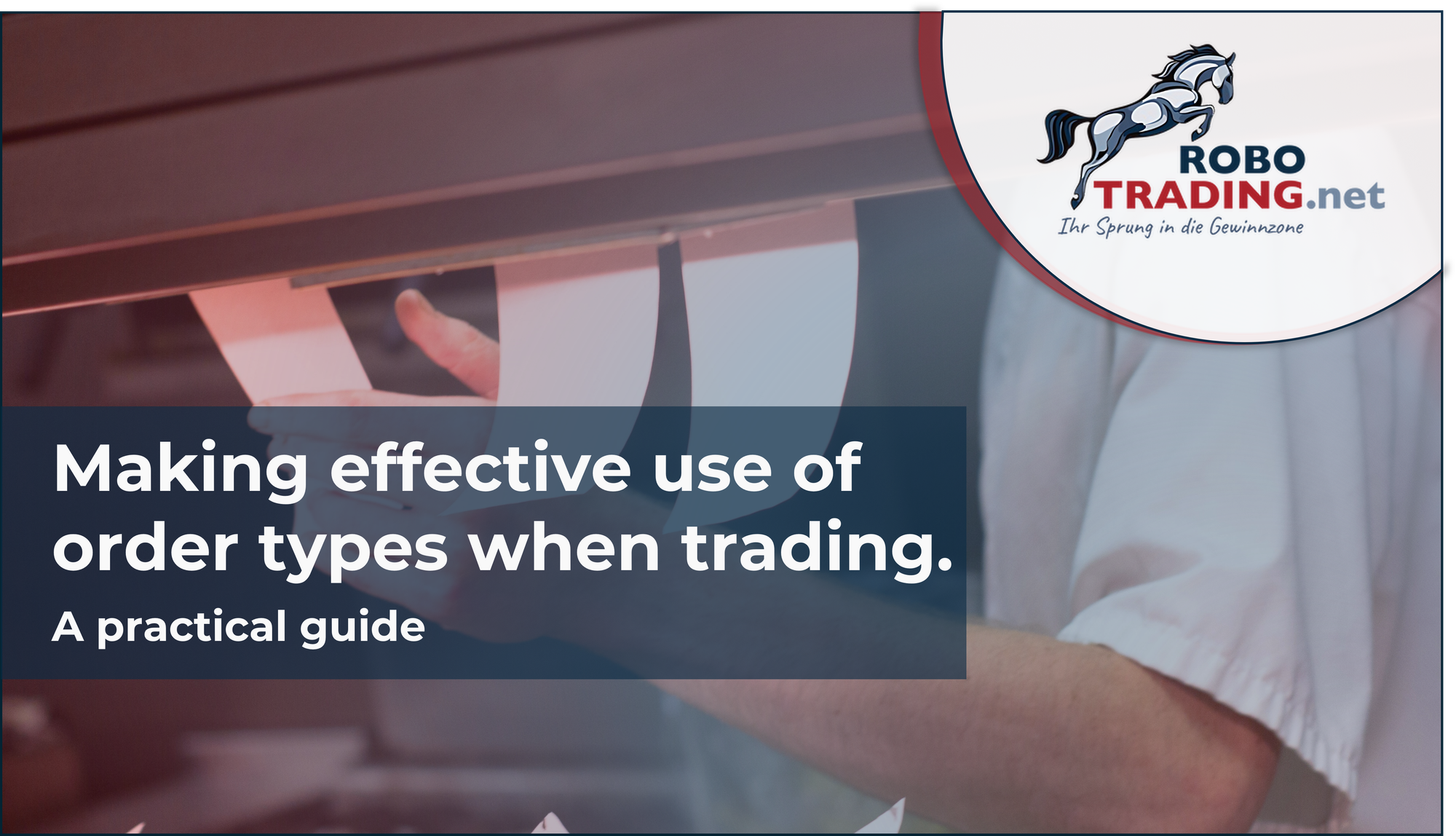Making effective use of order types when trading - a practical guide

In trading on the financial markets, choosing the right type of order is crucial to successfully implementing one's strategy. Different types of orders allow traders to precisely control their buy or sell orders. Below, we will explain the functionality and advantages of various order types – Market Order, Limit Order, Stop Order, Stop-Limit Order, and Trailing Stop Order – using practical examples.
Market Order
Example: Anna wants to buy 100 shares of Company X immediately because she expects a quick rise in price. The current market price is 50 EUR per share. Anna opts for a market order because immediate execution is more important to her than the exact purchase price. Her order is executed at the next available price, which in volatile markets could lead to a slightly higher or lower price than 50 EUR.
Limit Order
Example: Ben believes that shares of Company Y, currently trading at 75 EUR, are overvalued. He is willing to buy 100 shares, but only if the price falls to 70 EUR or below. Ben places a limit order to buy at a price of 70 EUR. This order will only be executed if the share price falls to 70 EUR or below, ensuring Ben does not pay more than he deems reasonable.
Stop Order
Example: Clara owns shares of Company Z, currently trading at 100 EUR. She wants to secure her profits while limiting the risk of a significant loss. Clara sets a stop order at 95 EUR. If the price falls to 95 EUR, her stop order becomes a market order, and the shares are sold at the next available price to avoid larger losses.
Stop-Limit Order
Example: Daniel wants to buy shares of Company A, but only under specific conditions. He sets a stop-limit order with a stop price of 55 EUR and a limit price of 56 EUR. If the share price of Company A reaches 55 EUR, Daniel's order becomes a limit order that will only be executed at a price of 56 EUR or better. This gives him control over the price he is willing to pay.
Trailing Stop Order
Example: Emma has bought shares of Company B, currently trading at 80 EUR. To secure her profits while leaving the possibility open to benefit from further price increases, she sets a trailing stop order with a distance of 5 EUR. If the price rises to 85 EUR, the stop price automatically adjusts to 80 EUR. If the price then falls, Emma's shares are sold as soon as the market price reaches 80 EUR, securing her profits while also allowing her to benefit from the further increase.
These examples illustrate how different order types can help traders precisely implement their trading strategies by maintaining control over the price and timing of their transactions. By understanding and applying these order types, traders can maximize their chances and minimize their risk simultaneously.
There are even more advanced order types, like GTC, FOK and IOC. Get more in-depth knowledge by signing up to our member only newsletter below.
Your Robotrading.net Team.
